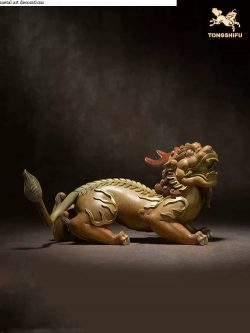Animals in india
India is renowned for its rich biodiversity and diverse range of animals, both endemic and exotic. From the majestic Bengal tiger to the graceful peacock, the country’s wildlife is a source of pride and fascination for nature enthusiasts worldwide. Let’s delve into the fascinating world of animals in India, highlighting some iconic species and conservation efforts.
Bengal Tiger (Panthera tigris tigris)
The Bengal tiger is India’s national animal and the most iconic symbol of its wildlife. These magnificent big cats roam the forests of India, particularly in reserves like Ranthambore, Jim Corbett, and Bandhavgarh. Despite being critically endangered due to habitat loss and poaching, efforts are underway to protect and conserve their populations through strict wildlife protection laws and conservation projects.
Indian Elephant (Elephas maximus indicus)
The Indian elephant is another charismatic species native to India. Known for their intelligence and social behavior, these elephants inhabit the forests and grasslands across the country. They play a significant role in Indian culture and are revered in religious festivals. Unfortunately, habitat loss and human-elephant conflict pose threats to their survival.
Asiatic Lion (Panthera leo leo)
The Asiatic lion is a subspecies found only in the Gir Forest of Gujarat, making it one of the rarest and most endangered species in the world. Conservation efforts, including habitat restoration and anti-poaching measures, have helped stabilize their population in recent years.
Indian Peafowl (Pavo cristatus)
The Indian peafowl, commonly known as the peacock, is a symbol of beauty and grace. These colorful birds are found across India and are culturally significant, often featured in art, mythology, and dance. They are relatively common and thrive in a variety of habitats.
Indian Rhinoceros (Rhinoceros unicornis)
The Indian rhinoceros, or greater one-horned rhinoceros, is primarily found in the northeastern region of India, particularly in Kaziranga and Manas National Parks. Poaching and habitat loss have threatened their survival, but strict conservation measures have led to a gradual increase in their numbers.
Indian Gaur (Bos gaurus)
The Indian gaur, also known as the Indian bison, is the largest species of wild cattle and is found in forested areas across India. These massive herbivores play a crucial role in maintaining the ecological balance of their habitats.
Snow Leopard (Panthera uncia)
In the remote mountain regions of northern India, the elusive snow leopard roams. Adapted to the harsh, cold environments of the Himalayas, these magnificent cats are highly endangered due to habitat degradation and poaching. Conservation initiatives aim to protect their dwindling populations.
Conservation Efforts
India has a network of national parks, wildlife sanctuaries, and conservation reserves aimed at protecting its diverse flora and fauna. Projects like Project Tiger, Project Elephant, and initiatives to protect specific species like the rhinoceros and lion demonstrate the country’s commitment to wildlife conservation.
Conclusion
The animals of India are not only integral to the country’s ecosystems but also hold cultural and ecological significance. While facing numerous threats, including habitat destruction, poaching, and human-wildlife conflict, concerted efforts by the government, conservation organizations, and local communities are crucial for ensuring the survival of these iconic species. Through sustainable conservation practices and raising awareness, India can continue to safeguard its incredible wildlife heritage for future generations.
ChatGPT can make mistakes. Consi


































































https://www.storeboard.com/theprestigecityhyderabadreview
https://community.sunrise.ch/u/hydunitreview
https://onedio.com/profil/theprestigecityhyderabadreview
https://wemakeit.com/users/hydunitreview
https://www.videezy.com/members/hydunitreview
https://www.jeuxvideo.com/profil/hydunitreview?mode=infos
https://www.geocities.ws/hydunitreview/
https://izea.com/@the-prestige-city-hyderabad-review-iuWAVLHK6w
https://gamma.app/docs/Untitled-y64qbfqp8tos7k9
https://www.fmscout.com/users/sobhacrystalmeadows.html
https://jobs.gamedeveloper.com/company/34082/sobha-crystal-meadows-review/
https://www.horseracingnation.com/user/sobhacrystalmeadows
https://community.plus.net/t5/user/viewprofilepage/user-id/134497
https://giphy.com/channel/sobhacrystalmeadows
https://my.omsystem.com/members/manikpawar
https://www.openrec.tv/user/v5u2dccmf4bzn3rigx73/about
https://pastelink.net/5hfzl1an
https://www.niadd.com/article/1190919.html
https://capway.com/learnmoney/content/NZwRNOHMkN
https://maps.visitfiemme.it/en/member/prestige-clairemont-review/288348802/
https://amara.org/videos/AaheFJax5rPD/info/prestige-clairemont-spacious-modern-living/
https://participation.bordeaux.fr/profiles/prestige_clairemont_
https://coderwall.com/Prestige%20Clairemont%20Plan
https://www.trepup.com/@pavanpawar
https://beforeitsnews.com/v3/contributor/bio/?uid=949871